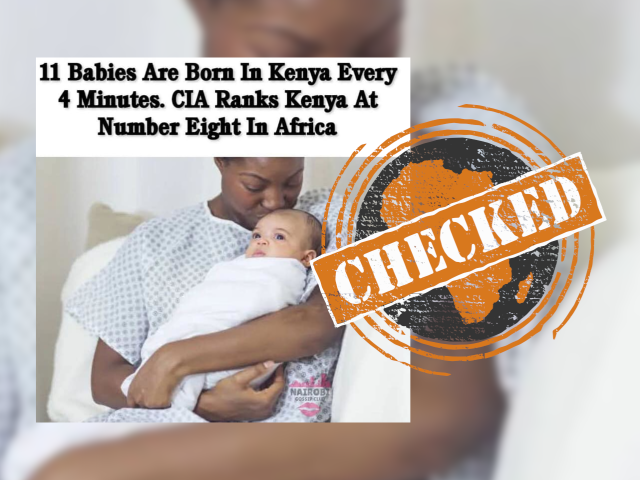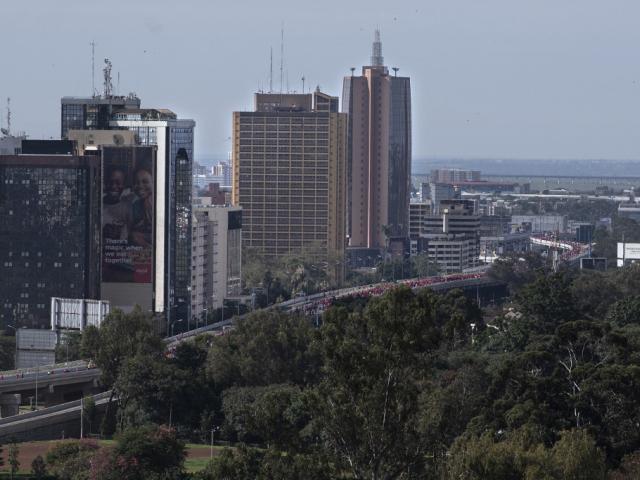On 6 July 2021, Kenyan president Uhuru Kenyatta made a surprise night-time tour of informal settlements in the capital Nairobi, and opened five new hospitals.
The tour was at night to avoid the crowds that would have made it impossible to enforce Covid-19 public health protocols, such as social distancing, the president said.
The next day, our artificial intelligence (AI) tools picked up a claim attributed to the president and carried by the media. Kenyatta was quoted as saying he regretted that “despite generating over 50% of the country’s gross domestic product [GDP], Nairobi residents still struggle to access basic public services”.
The AI tools, still under development, identify public claims of interest and alert fact-checkers to vet these for accuracy.
The media stories cited the president’s strategic communication unit as the source. We found the original article on the State House website.
We dug further and found a video clip from the tour in which the president said: “At the end of the day, where three-quarters of our people live in a county that generates in excess of 50% of our GDP all [in it should] feel catered for equally.”
Having established what Kenyatta said, is he right? Do three-quarters of Kenya’s population live in Nairobi? And does the county generate more than half of the country’s GDP? We checked.
Nairobi home to less than 10% of Kenyans
Africa Check asked Kanze Dena, the president’s spokesperson, for the source of his figures. We will update this report when we receive her response.
Kenya’s most recent population census, published in 2020, put the population of Kenya at 47.6 million. Nairobi City county had 4.4 million people. Nairobi was therefore home to 9.2% of the country’s population, not 75%, as the president said.
Nairobi generates just over 5th of Kenya’s GDP
In 2019, Kenya’s national statistics office released the first report on how much the country’s 47 counties individually contributed to GDP.
Between 2013 and 2017, Nairobi’s share of national GDP was estimated to be an average of 21.7%. Nakuru county was a distant second at 6.1%, followed by Kiambu, at 5.5%. Mombasa was fourth, with 4.7%, and Machakos fifth, with 3.2%.
In 2019 we interrogated a similar claim, which said Nairobi was responsible for 45% of the country’s GDP, and found it to be incorrect. Has this changed since? We asked the national data agency if there was newer data.
“We are yet to release the 2021 report, but the estimates that were released in February 2019 are the reliable official figures,” Simon Gaitho, consumer price index manager at the statistics office, told Africa Check.
Gaitho said though there have been delays in releasing the newer data, the 2021 numbers would not be very different from those from 2019.
While agriculture accounts for approximately a third of Kenya’s GDP, very little farming happens in the capital, Dr Ken Opalo, an assistant professor at Georgetown University in the US with expertise in the political economy of development, previously told Africa Check.
Kenya’s most recent economic survey showed that agriculture contributed 32.3% of GDP.
Geographic concentration of economic power may widen inequality, says expert
Opalo said the distribution of Kenya’s GDP was not unusual as capital cities tended to be the backbone of a country's economy.
But Nairobi’s share “should worry the government” as too much concentration of economic power in one county might widen inequality.
James Shikwati, the founder and chief executive of Inter Region Network, a Kenyan-based policy think tank, gave us more context about Nairobi.
Most agriculture took place in rural areas where the majority of the population lived, but Nairobi still accounted for the lion’s share of national GDP, he told Africa Check.
“Nairobi still contributes the largest share, because if you look at the capital that powers the economy, it is all based in Nairobi, be it from the venture capitalists, financiers, local and international non-governmental organisations, development firms, embassies … most have their headquarters in Nairobi.”
“Most manufacturing firms, industries, universities and people are based in Nairobi. Also, huge aspects of trading and value-addition happens here,” Shikwati said.
Nairobi also attracted most investment in real estate and transport infrastructure.
But while the county of Nairobi City contributes the largest share by far to the national GDP, in a country of 47 counties, this is not more than half as president Kenyatta claimed.
As power and resources continued to be redistributed to the other counties as provided for in Kenya’s 2010 constitution, their contribution to national GDP would likely increase with time, Shikwati said.





Add new comment